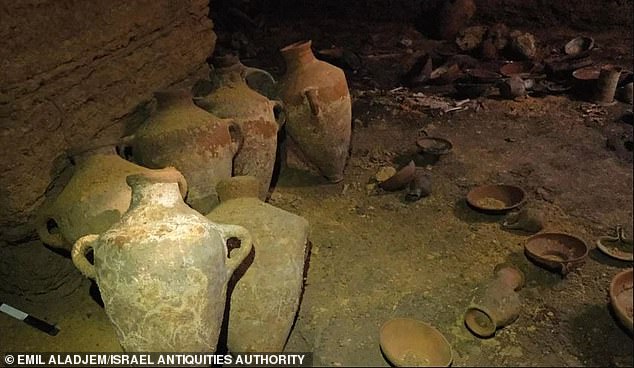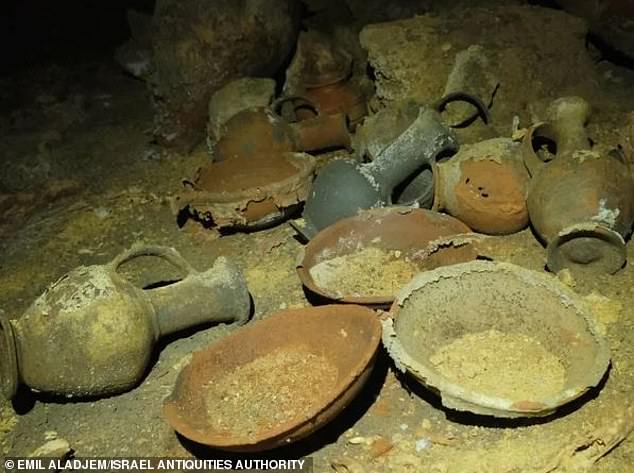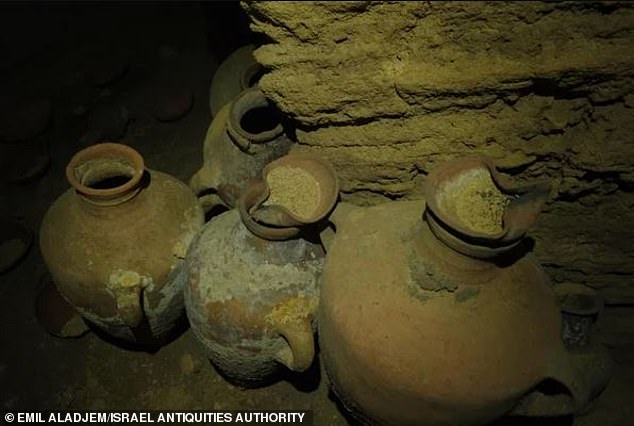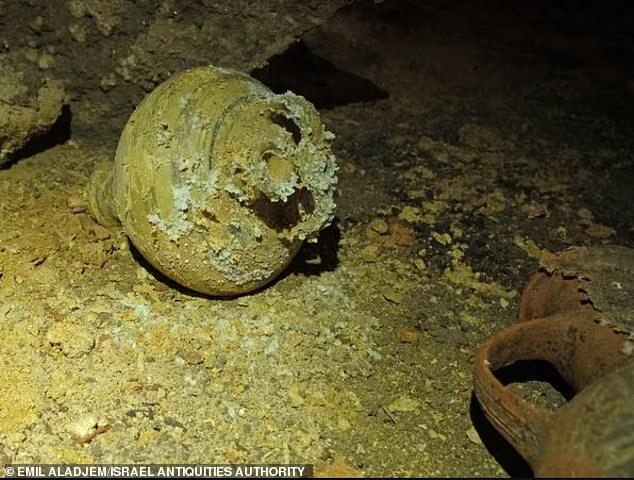Archaeologists have found an intact burial cave containing dozens of artifacts that dates to the time of the Egyptian Pharaoh Ramesses II.
The discovery of the space, described by officials as being ‘frozen in time,’ was made by accident when a mechanical digger hit the roof of the structure at a beach spot in Palmahim National Park.
The burial site contains dozens of pieces of intact pottery and bronze vessels, jars and bowls of various types, cooking vessels and oil lamps. There were also very small vessels that had held tiny amounts of precious substances.

Archaeologists have found an intact burial cave containing dozens of artifacts that dates back to the time of the Egyptian pharaoh Ramesses II

The discovery of the space, described by officials as being ‘frozen in time,’ was made by accident when a mechanical digger hit the roof of the cave structure at a beach spot in Palmahim National Park
Archaeologists also unearthed some tools of war, such arrowheads and spear tips made of bronze.
Eli Yannai, an expert on the Bronze Age at the Israel Antiquities Authority, confirmed that the site contained a host of different items that were meant to serve the dead in the afterlife.
‘This is a once-in-a-lifetime find,’ Yannai told the Jerusalem Post. ‘It’s not every day that you see an “Indiana Jones” set – a cave with vessels on the floor that haven’t been touched in 3,300 years. We are talking about the Late Bronze Age. These are precisely the days of the famous king, Ramses II – the one some identify with the story of the Exodus.’
‘The fact that these people were buried along with weapons, including entire arrows, shows that these people might have been warriors, perhaps they were guards on ships — which may have been the reason they were able to obtain vessels from all around the area,’ archaeologist David Gelman told DW.com.

The burial site contains intact pottery and bronze vessels, jars and bowls of various types, cooking vessels and oil lamps

‘This is a once-in-a-lifetime find,’ Yannai told the Jerusalem Post . ‘It’s not every day that you see an “Indiana Jones” set – a cave with vessels on the floor that haven’t been touched in 3,300 years
The burial chamber was carved into the bedrock in the form of a square, with a pillar supporting its ceiling.
Authorities believe this burial site may have served a family or clan.
However, not much more about the bodies can be said. In contrast to the grave site artifacts, the bodies’ preservation was poor – meaning that DNA extraction and analysis is not going to happen.
Some of the bodies had been laid on their back, while some seem to have supplanted other bodies, he told Haaretz.
Researchers don’t know what settlement they may have been associated with.
‘It may have been lost to the sea over time,’ Yannai said.

‘The fact that these people were buried along with weapons, including entire arrows, shows that these people might have been warriors,’ David Gelman said. Above: Palmahim Beach in southern Israel
source:dailymail.co.uk








